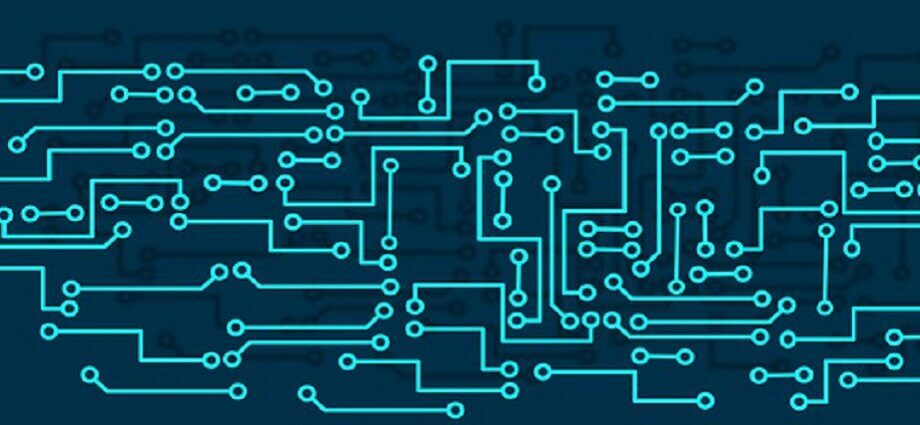Artificial intelligence (AI) refers to the ability of a computer or machine to perform tasks that would normally require human intelligence, such as learning, problem-solving, and decision-making. AI is accomplished through the use of algorithms, which are sets of instructions that allow a computer to perform specific tasks.
AI has the potential to greatly impact a wide range of industries and applications, including healthcare, transportation, education, and entertainment. It has the potential to transform the way we live and work, making many tasks easier and more efficient. However, the integration of AI also raises ethical concerns and has the potential to disrupt certain industries and job markets. It is important to carefully consider the potential impact of AI as it continues to advance and be integrated into more areas of our lives.
Overview of the Key Elements of AI
There are several key elements that are essential to the functioning of artificial intelligence (AI):
• Machine Learning: Machine learning refers to the ability of a computer or machine to learn and improve over time without being explicitly programmed. It is a type of AI that involves the use of algorithms to analyze data and make predictions or decisions based on that data.
• Natural Language Processing: Natural language processing (NLP) refers to the ability of a computer or machine to understand and process human language. NLP is used to enable computers to communicate with humans in a natural and intuitive way, using voice or text.
• Computer Vision: Computer vision refers to the ability of a computer or machine to interpret and understand visual data from the world around us. It is used to enable computers to see and understand the world in a similar way to humans.
• Robotics: Robotics refers to the use of computers and machines to perform tasks that would normally require human intervention. It is used to enable computers to perform physical tasks in the real world, such as manufacturing or transportation.
Machine Learning
Definition of Machine Learning and How it Works
Machine learning is a subfield of artificial intelligence that involves the design and development of algorithms and systems that can automatically learn and improve from data without being explicitly programmed.
In machine learning, a model is trained on a dataset, which consists of input data and corresponding labels or output values. This function is called a model, and it can be used to make predictions on new, unseen data.
There are two main types of machine learning: supervised learning and unsupervised learning.
In supervised learning, the model is trained on labeled data, which means that the data includes both input and corresponding output values. The goal is to learn a function that can predict the output values for new, unseen data based on the input data.
Examples of supervised learning include regression (predicting a continuous value), classification (predicting a categorical value), and structured prediction (predicting a structured output such as a parse tree).
In unsupervised learning, the goal is to discover patterns or relationships in the data. Examples of unsupervised learning include clustering (grouping data into categories), dimensionality reduction (reducing the number of features in the data), and density estimation (estimating the probability distribution of the data).
Types of Machine Learning (Supervised, Unsupervised, Reinforcement)
There are several types of machine learning, including supervised learning, unsupervised learning, and reinforcement learning. Here is a brief overview of each type:
Supervised Learning: In supervised learning, the model is trained on labeled data, which means that the data includes both input and corresponding output values. The goal is to learn a function that can predict the output values for new, unseen data based on the input data. Examples of supervised learning include regression (predicting a continuous value), classification (predicting a categorical value), and structured prediction (predicting a structured output such as a parse tree).
Unsupervised Learning: In unsupervised learning, the goal is to discover patterns or relationships in the data. Examples of unsupervised learning include clustering (grouping data into categories), dimensionality reduction (reducing the number of features in the data), and density estimation (estimating the probability distribution of the data).
Reinforcement Learning: In reinforcement learning, the model learns to make decisions in an interactive environment by receiving rewards or punishments. The model is given a set of actions to choose from, and it learns to select the actions that maximize the reward through trial and error. Reinforcement learning is used in a variety of applications, such as control systems, game playing, and natural language processing.
Natural Language Processing
Definition of Natural Language Processing and How it Works
Natural language processing (NLP) is a subfield of artificial intelligence and linguistics that focuses on the interaction between computers and humans through natural language. It involves the development of algorithms and systems that can understand, interpret, and generate human language.
There are several tasks that fall under the umbrella of NLP, including text classification, language translation, text summarization, and question answering.
To perform these tasks, NLP systems typically rely on machine learning algorithms and techniques, such as deep learning and neural networks. These algorithms are trained on large datasets of human language, and they can learn to recognize patterns and relationships in the data.
NLP is to represent words and texts as numerical vectors, using techniques such as word embeddings or document embeddings. These vector representations can capture the meaning and context of words and texts, and they can be used as inputs to machine learning models.
NLP techniques include rule-based systems, which rely on predefined rules and heuristics to process language, and symbolic approaches, which use logical reasoning to understand and generate language.
NLP has a wide range of applications, including language translation, information retrieval, text generation, and customer service. It is used in a variety of industries, such as healthcare, finance, and e-commerce.
Examples of Natural Language Processing in Action
Here are some examples of natural language processing (NLP) in action:
Language Translation: NLP can be used to translate texts or speech from one language to another. For example, Google Translate is a popular tool that uses NLP to translate between over 100 languages.
Information Retrieval: NLP can be used to search and retrieve relevant information from large datasets, such as web pages or documents. For example, a search engine like Google uses NLP to understand the meaning and context of search queries and to find relevant results.
Text Classification: NLP can be used to classify texts into categories based on their content. For example, an email filter might use NLP to classify emails as spam or non-spam based on their subject lines and body text.
Text Summarization: NLP can be used to automatically generate a summary of a long text. For example, a news aggregator might use NLP to summarize articles from multiple sources and present a brief overview of the main points.
Question Answering: NLP can be used to build systems that can understand and answer questions posed in natural language. For example, a virtual assistant like Siri or Alexa uses NLP to understand and respond to voice commands and queries.
Computer Vision
Definition of Computer Vision and How it Works
Computer vision is a field of artificial intelligence that involves the design and development of algorithms and systems that can understand and analyze visual data, such as images and video. It allows computers to “see” and interpret the world around them in a way similar to how humans do.
Computer vision systems use machine learning algorithms and techniques, such as deep learning and neural networks, to analyze and understand visual data. These algorithms are trained on large datasets of images and other visual data, and they can learn to recognize patterns and relationships in the data.
There are several tasks that fall under the umbrella of computer vision, including image classification, object detection, image segmentation, and facial recognition.
To perform these tasks, computer vision systems typically rely on image processing techniques to extract features from the visual data. These features can include color, texture, shape, and other characteristics of the objects in the image. The extracted features are then used as input to machine learning models, which can classify the image or detect and locate objects in the scene.
Computer vision has a wide range of applications, including robotics, autonomous vehicles, security, and healthcare. It is used in a variety of industries to automate and improve tasks that involve visual data.
Examples of Computer Vision in Action
Here are some examples of computer vision in action:
Image Classification: Computer vision can be used to classify images into categories based on their content. For example, a system might be trained to classify images as “cat” or “dog” based on their visual features.
Object Detection: Computer vision can be used to locate and identify objects in images or video. For example, a self-driving car might use computer vision to detect and track other vehicles, pedestrians, and road signs.
Image Segmentation: Computer vision can be used to segment images into different regions or objects. For example, a medical imaging system might use computer vision to segment an MRI scan into different organs or tissues.
Facial Recognition: Computer vision can be used to identify and track faces in images or video. For example, a security system might use facial recognition to identify individuals and grant or deny access to a building.
Augmented Reality: Computer vision can be used to overlay digital information on top of the real world. For example, a smartphone app might use computer vision to recognize objects in the camera view and display information about them.
Robotics
Definition of Robotics and How it Works
Robotics is a field that involves the design and development of robots, which are machines that can be programmed to perform tasks automatically. Robots are typically designed to mimic human or animal behaviors and movements, and they can be used in a variety of applications, including manufacturing, healthcare, transportation, and entertainment.
Robots typically consist of a mechanical body, sensors, actuators, and a control system. The mechanical body includes the structure, joints, and appendages that allow the robot to move and interact with its environment. The sensors allow the robot to gather information about the environment, such as the location of objects or the presence of obstacles. The actuators, such as motors or hydraulic cylinders, enable the robot to move and manipulate objects. The control system coordinates the actions of the robot based on the input from the sensors and the instructions provided by a programmer or controller.
There are several types of robots, including humanoid robots, which are designed to resemble and mimic human behavior, and industrial robots, which are used in manufacturing and other tasks that require precise and repetitive movements.
Robots can be programmed using a variety of approaches, including traditional control systems, which rely on predefined rules and algorithms, and machine learning algorithms, which can learn from data and adapt to new situations.
Robotics has a wide range of applications, including manufacturing, healthcare, transportation, and entertainment. It is used in a variety of industries to automate and improve tasks that are dangerous, tedious, or difficult for humans to perform.
Examples of robotics in action
Here are some examples of robotics in action:
Manufacturing: Industrial robots are widely used in manufacturing to perform tasks such as welding, painting, assembly, and packaging. These robots are typically designed for precise and repetitive movements and can operate 24/7 without needing breaks or rest.
Manufacturing: Industrial robots are widely used in manufacturing to perform tasks such as welding, painting, assembly, and packaging. These robots are typically designed for precise and repetitive movements and can operate 24/7 without needing breaks or rest.
Healthcare: Robots can be used in healthcare to assist with tasks such as medication delivery, surgery, and rehabilitation. For example, surgical robots can be used to perform minimally invasive procedures, and rehabilitation robots can be used to help patients recover from injuries or disabilities.
Transportation: Robots can be used in transportation to perform tasks such as package delivery, traffic management, and public transportation. For example, autonomous vehicles, such as self-driving cars, use robotics and machine learning algorithms to navigate and make decisions in real-time.
Entertainment: Robots can be used in entertainment to perform tasks such as singing, dancing, and acting. For example, robots are used in theme parks and other attractions to interact with visitors and provide entertainment.
Exploration: Robots can be used in exploration to perform tasks such as mapping, surveying, and collecting samples. For example, NASA uses robots to explore other planets and moons, and ocean exploration robots are used to study the depths of the oceans.











